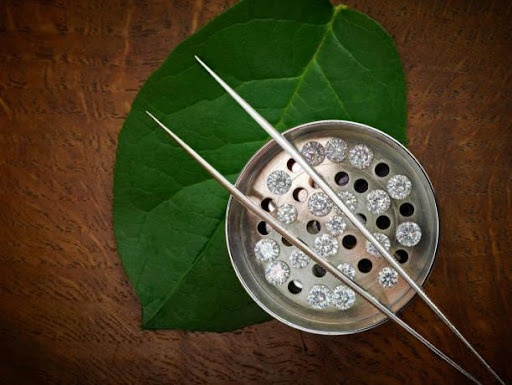
Lab grown diamonds are real diamonds.
Lab-grown diamonds have been around since the 1950s, but they've only recently become popular in the jewelry world. For those who are considering purchasing a diamond ring or other jewelry made with lab-grown diamonds, here are some things you should know:
They are not the same as synthetic diamonds, which are man-made materials that can be used to create gemstones. Natural mined diamonds come from deep within the earth and undergo a series of processes before becoming a finished gemstone. Lab grown diamonds are created in an entirely different way, but they also go through many steps to become what we know as "real" diamond jewelry. Both types of gems have their own unique characteristics and appeal; lab growns just don't happen naturally!
Colour enhancement is a chemical process that enhances the colour of diamonds. The process involves dissolving natural diamond and injecting it into tiny carbon tubes, called VVS2-F graded diamonds, to create a new diamond with enhanced colour. This process can be done in a lab or by your jeweler and will not necessarily be permanent as it depends on how long the new diamond lasts before being exposed to light and heat again. If you are considering purchasing an existing diamond and want to increase its value through colour enhancement, this may be an option for you as well.
Lab-grown diamonds are a more affordable option, as they can be mass produced in a laboratory. Natural mined diamonds are also rare, which means that they're expensive to buy and difficult to find. Lab-grown diamonds are not as rare and thus easier to buy at an affordable price.
These diamonds are 100% carbon neutral, which means they're not contributing to the destruction of our planet's environment. In fact, they're a renewable resource.
The process of creating lab-grown diamonds involves using a chemical reaction to create a diamond seed. This seed is then placed in an ultra-high pressure chamber where it is subjected to extreme temperatures and pressures until it grows into a full-sized diamond. Because no mining is involved in this process, it doesn't produce any pollutants or leave behind any waste products that would contribute to air pollution or water contamination—which makes them eco-friendly!
If you’re wondering what the difference is between how lab-grown diamonds are graded and how natural diamonds are graded, it comes down to one thing: origin. As with all other mined stones, a diamond’s origin has an impact on its quality and value. But when it comes to lab-grown diamonds and their grading standards, there is no difference at all. Lab grown diamonds can be graded by the same labs that grade natural diamonds because they are truly identical in every way—at least from a scientific perspective.
The reason why this ability exists is because laboratory-created gems have the same chemical structure as naturally occurring ones (read more about that here). The only major difference between them is where they came from; whether or not someone dug into Earth's crust looking for them or if they were put together in a lab instead.
Lab grown diamonds are real, they are a good choice for some people considering purchasing a diamond ring or other jewelry, and they can be graded by the same labs as natural diamonds.
Natural mined diamonds have been around for thousands of years, but lab-grown ones are relatively new and only have about 20 years under their belt. Because of this lack of time in existence, there’s naturally a bit more skepticism about what it means to own one if you decide to give them as gifts or purchase one yourself. But with our lab-grown diamond background checker tool, you can easily identify whether your stone is authentic based on its unique ID number and laser inscription (if applicable).
Sell your diamonds with ease with Diamond Registry’s comprehensive approach and vast global industry connections to help you find the best buyer for your diamond fast. Visit www.diamondregistry.com/sell-your-ring to take your first step to fast, easy and reliable way of selling your diamond.
Want to check and calculate diamond per carat instantly? Go to DR’s diamond price calculator to know how. Reliable and trusted carat calculator in the diamond industry since!

